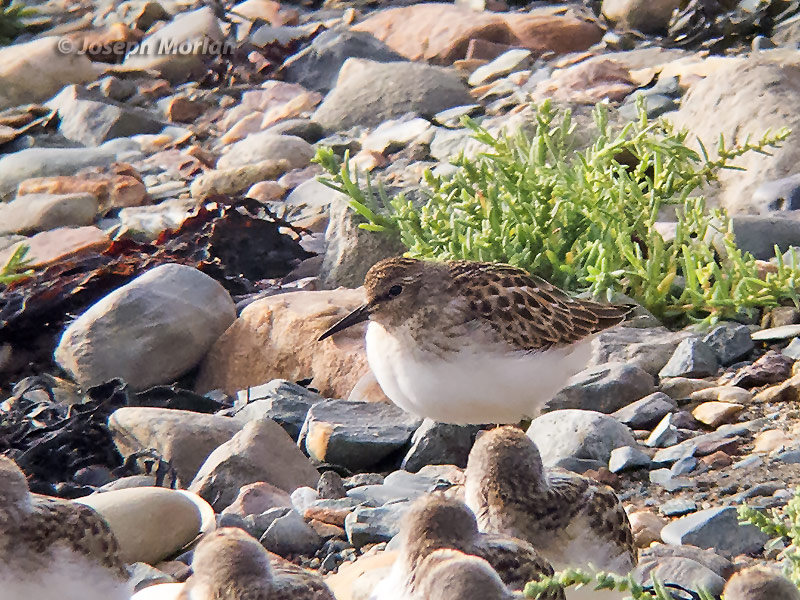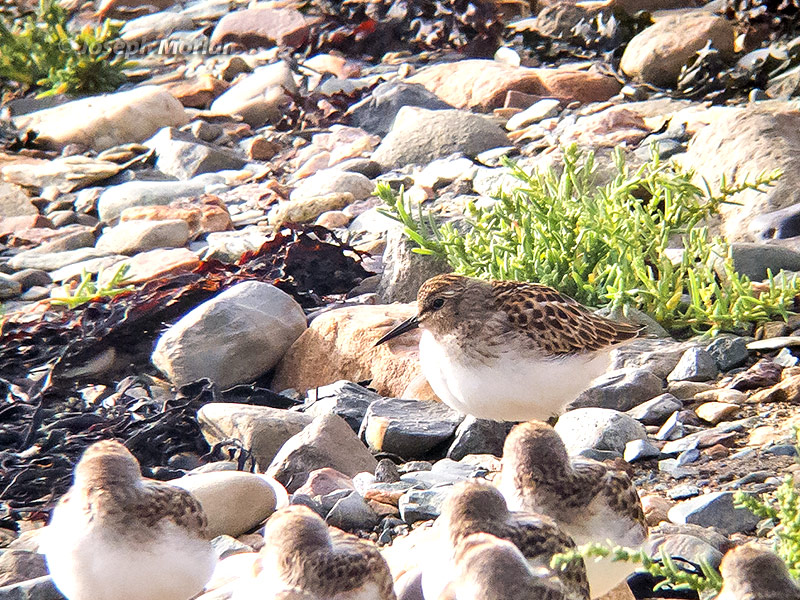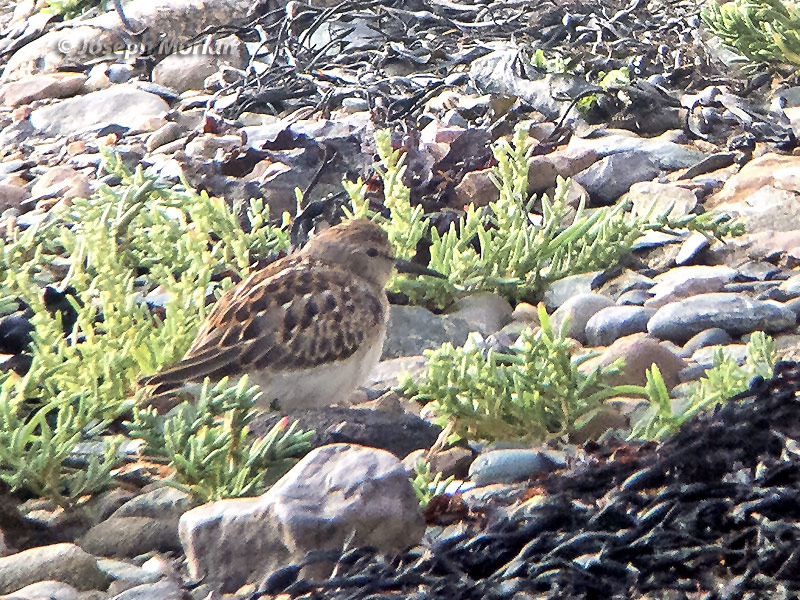


Juvenile Least Sandpiper with juvenile Semipalmated Sandpipers. Note much browner plumage, different bill shape, lack of primary projection and yellowish legs of Least Sandpiper. Distinction from similar Long-toed Stint (C. subminuta) of Asia is tricky. Least has buffy fringes to median coverts as seen here while Long-toed has these feathers white edged (lower scapulars are white tipped on both). Split supercilium seen here, often claimed as a feature of Long-toed Stint is not reliable. Least is the smallest of the North American sandpipers. It breeds as close as Newfoundland but in New Brunswick it occurs primarily as a migrant. Digiscoped with Panasonic DMC-LX5 | hand-held (no adapter).
References:
Chandler, R. (2009). Shorebirds of North America, Europe, and Asia: A photographic guide. Princeton.
Hicklin, Peter and Cheri L. Gratto-Trevor. (2010). Semipalmated Sandpiper (Calidris pusilla), The Birds of North America (P. G. Rodewald, Ed.). Ithaca: Cornell Lab of Ornithology; Retrieved from the Birds of North America: https://birdsna.org/Species-Account/bna/species/semsan
Nebel, Silke and John M. Cooper. (2008). Least Sandpiper (Calidris minutilla), The Birds of North America (P. G. Rodewald, Ed.). Ithaca: Cornell Lab of Ornithology; Retrieved from the Birds of North America: https://birdsna.org/Species-Account/bna/species/leasan